Have you been noticing an increased water intake by your dog or cat recently in North London? There might be instances where you find yourself refilling their water bowl more often than usual.
You might even spot your cat unexpectedly hydrating from the tap, or your dog quenching its thirst from the toilet bowl. If these situations resonate with you, they could be signs of a serious underlying health condition. Let's look into some of the questions you might have...
What is the usual amount of water a dog or cat should consume?
Typical water intake, as described in textbooks, is 1-2ml per kilogram of body weight every hour. This equates to roughly 25-50ml/kg over a 24-hour period.
For instance, a westie, a dog breed that usually weighs around 10kg, would typically consume about 480ml, just shy of a pint, in a day. Of course, individual variations exist and can depend on factors such as the moisture content of their food (wet or dry), weather conditions and water loss due to exercise and panting.
What does polydipsia mean?
Polydipsia refers to a condition characterized by excessive drinking, technically defined as more than 100ml per kg in a day.
While some pets might show an apparent increase in their drinking habits, they could still be drinking less than this amount. If a pet drinks over 50ml/kg in 24 hours, it could arouse suspicion of polydipsia. But when intake crosses the 100ml/kg/24hrs threshold, it unquestionably classifies as polydipsia.Concurrently, polyuria refers to an unusually high production of urine.
If you think your cat or dog is drinking too much water, please get in touch with us today.
What could be the reason behind my pet's excessive water intake?
The body naturally maintains a careful balance of water through the regulation of water intake and the water expelled via urine. If there is either a deficit of water intake or a surplus of water loss, the pituitary gland in the brain gets a signal to discharge anti-diuretic hormone (ADH). This hormone instructs the kidneys to hold onto water and condense the urine.
In such situations, the brain's thirst centre is also activated, stimulating the urge to drink. The increased drinking could be because of several factors. These could include failure of the kidney's concentration mechanisms, lack of response to ADH from the kidneys, non-production or non-release of ADH, or because there's an excessive trigger for drinking (primary polydipsia).
What are the typical reasons for my pet's increased water consumption?
There are a variety of reasons which could cause your pet to drink more water. The common ones include:
- Kidney (renal) dysfunction
- Liver (hepatic) disease
- Diabetes mellitus (commonly referred to as sugar diabetes)
- Diabetes insipidus (also known as water diabetes)
- Hyperthyroidism (overactive thyroid) in cats
- Pyometra, an infection of the uterus in animals that are not spayed
- Cushing’s disease, which involves an overproduction of the natural steroid, cortisol, by the adrenal glands
- Addison’s disease, characterised by reduced steroid production by the adrenal glands
- Urinary tract infections
- Elevated calcium levels, occasionally linked with cancer
- Behavioural problems leading to a psychological obsession with drinking excessive amounts of water (psychogenic polydipsia)
- Compensatory polydipsia, which can occur after significant fluid loss due to vomiting or diarrhoea
If your pet's fluid intake is causing you concern, it would be beneficial to measure their water consumption over a day and inform your vet about it. Your vet at Blythwood Vets may require a fresh urine sample, ideally collected in the morning before your pet’s consultation.
How is polydipsia diagnosed and investigated?
While most cases may be relatively simple to diagnose and need minimal testing (like measuring water intake, taking a urine sample and conducting a blood test), some may require more extensive, time-consuming and potentially costly investigations.
Your vet might suggest a series of tests that could include:
- Urinalysis to examine the concentration of the urine and to look for signs of glucose and infection.
- A 24-hour water intake measurement, if feasible, to validate polydipsia and to determine the extent of it.
- A complete blood count and serum biochemistry to evaluate the health of their liver, kidneys, blood glucose and thyroid levels. Additional blood tests to examine hormone function may be needed based on the initial test results.
- Further investigations might involve X-rays and ultrasound of your pet's abdomen to closely inspect their liver, kidneys and adrenal glands to reach a diagnosis.
The treatment plan for polydipsia in cats and dogs primarily depends on the root cause. For example:
- In the case of diabetes, daily insulin injections would be necessary.
- For Cushing’s disease, daily medication would be required to manage the symptoms.
- For chronic kidney disease, the treatment strategy involves preserving kidney health and ensuring the best possible quality of life, through dietary modifications, medication and unrestricted access to water.
The prognosis will ultimately be determined by the diagnosis and could range from very good to very poor. However, an early diagnosis in many conditions can pave the way for a better outcome, making it crucial to note increased drinking as a significant sign warranting investigation.
Remember, prevention is better than cure. Please call your local Blythwood Vets in North London if you have any concerns about your pet’s drinking habits and it’s important to remember to never restrict your pet’s water intake.


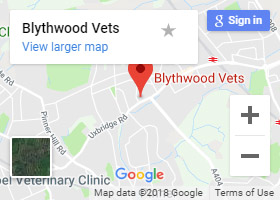
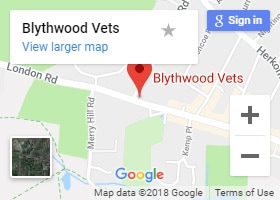
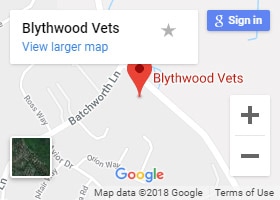
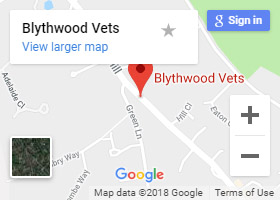
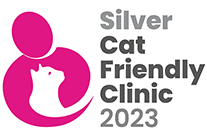
Pet Advice